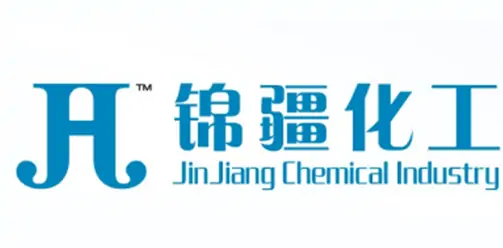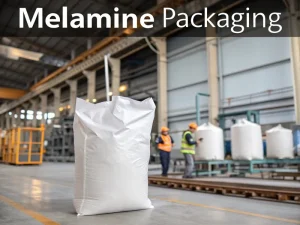
High Pressure Nelamine Use For Melamine Tableware Advantage
Tech Blog High Pressure melamine Use For Melamine Tableware Melamine tableware has become a staple for households, restaurants, and catering services worldwide due to its

The urea pH in water is usually close to neutral (about 7-8). Still, the specific value is affected by concentration, temperature, and impurities. Pure urea itself is weakly alkaline, while industrial or agricultural urea may have pH fluctuations due to production process residues (such as urea, ammonia, etc.), which need to be analysed in conjunction with actual scenarios.
Urea (CO(NH₂)₂) is a neutral organic compound with no acid-base properties in its solid state. But after dissolving in water, urea will slowly hydrolyse to produce ammonia (NH₃) and carbon dioxide (CO₂), with the reaction equation:
CO(NH₂)₂ + H₂O → 2NH₃ + CO₂↑
This hydrolysis reaction will release a small amount of ammonia, gradually making the solution weakly alkaline (pH about 7.5-8.5).
As the temperature increases, the rate of urea hydrolysis also increases, which may raise the pH value of the solution.
In biological systems, urease can catalyse the decomposition of urea, accelerate pH changes, and highly alkaline environment.
Attention should be paid when using a pH meter:
Calibrate the instrument to standard buffer solutions (such as pH 4.01, 7.00, 10.01).
The solution temperature should be consistent with the calibration temperature to avoid temperature compensation errors.
After stirring the solution, let it stand for 10 seconds before reading to reduce hydrolysis interference.
Suitable for rough detection, but high-precision test strips (such as pH 6.5-10 range) should be selected to avoid misjudgment caused by colour gradients.
The concentration is usually low (<10%), and the pH value fluctuates greatly (6-8) due to differences in solubility and impurities; When agricultural urea is applied as a nitrogen fertilizer, urease in the soil quickly catalyzes its hydrolysis, which may cause a short-term increase in local soil pH, but in the long run, it will restore acidity due to nitrification.
High-purity urea solution (such as PCR buffer) is usually controlled to a neutral pH (7-7.5) through regulators to avoid interfering with the reaction.
Automotive urea solution (diesel engine exhaust treatment fluid) must strictly comply with the pH 9-10 standard and require the addition of regulators such as ammonia water.
The automotive urea solution (i.e. AdBlue or diesel exhaust treatment solution) is mainly composed of 32.5% high-purity urea and 67.5% deionised water. According to the international standard ISO 22241, its pH value needs to be strictly controlled within the range of 9.5~10.5. This chemical stability is a key condition for ensuring compatibility between urea solution and automotive SCR (Selective Catalytic Reduction) systems.
In SCR technology, the pH value of the urea solution directly affects the reduction efficiency of nitrogen oxides (NOx). When the solution is sprayed into the exhaust gas, the ammonia generated by urea hydrolysis reacts with NOx on the catalyst surface, ultimately producing nitrogen gas (N₂N₂) and water (H₂OH₂O).
High pH (>10.5): may cause scaling on the catalyst surface, reducing reaction activity;
Low pH (<9.5): Incomplete hydrolysis of urea produces impurities such as biuret, which can clog nozzles or filters.
Research data shows (Journal of Environmental Chemical Engineering, 2020) that when the pH value deviates from the standard range by 0.5 units, the NOx conversion efficiency may decrease by 10% to 15%.
Long-term temperatures above 25 ℃ will accelerate urea decomposition, leading to an increase in free ammonia and pH value.
Although crystallisation occurs at low temperatures (such as below -11 ℃), there is no significant change in pH value after thawing.
Ultraviolet irradiation can promote condensation reactions and produce insoluble impurities.
Metal ions (such as calcium and iron) pollution can catalyse side reactions and alter the acidity or alkalinity of the solution.
The urea pH in water is usually close to neutral. Still, it may vary due to factors such as concentration, temperature, and enzyme activity. This pH behaviour is crucial for its applications in agriculture, industry, and research. Understanding its pH behaviour can help you make the right decisions when using urea.

Tech Blog High Pressure melamine Use For Melamine Tableware Melamine tableware has become a staple for households, restaurants, and catering services worldwide due to its

Tech Blog Melamine packaging For manufacturers, inaccurate packaging not only fails to meet national standards but also increases labor costs and the risk of product

Tech Blog How to Detect Melamine in Textiles? Melamine powder, a nitrogen-containing heterocyclic compound, is widely used in flame-retardant textiles and plastic products due to

JINGJIANG MELAMINE POWDER
© JINJIANG MELAMINE